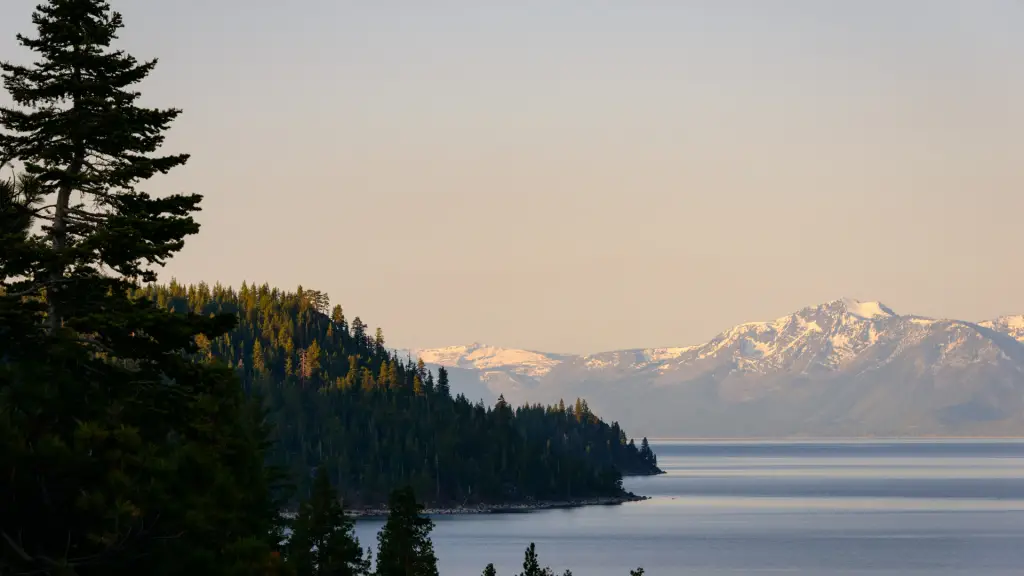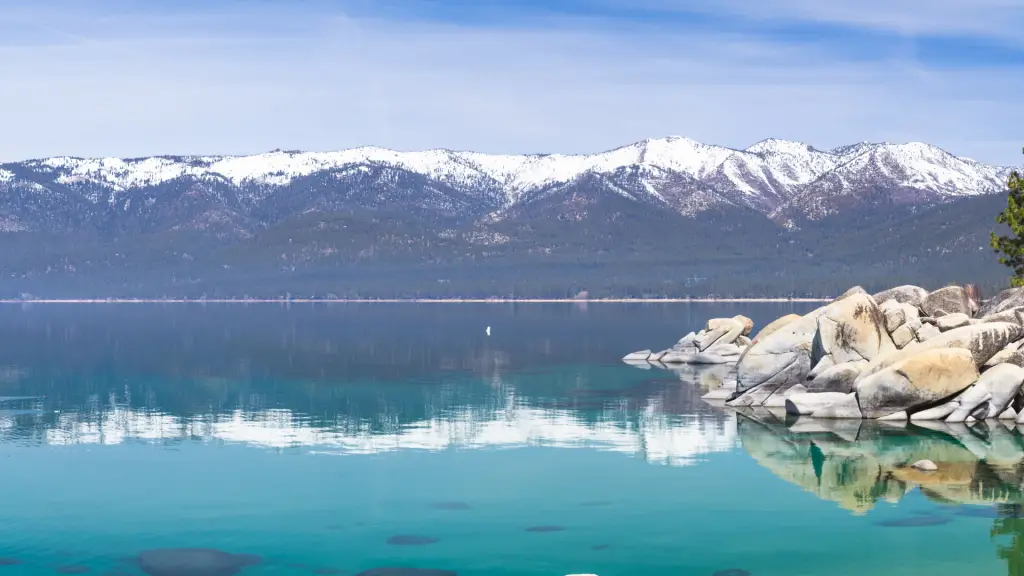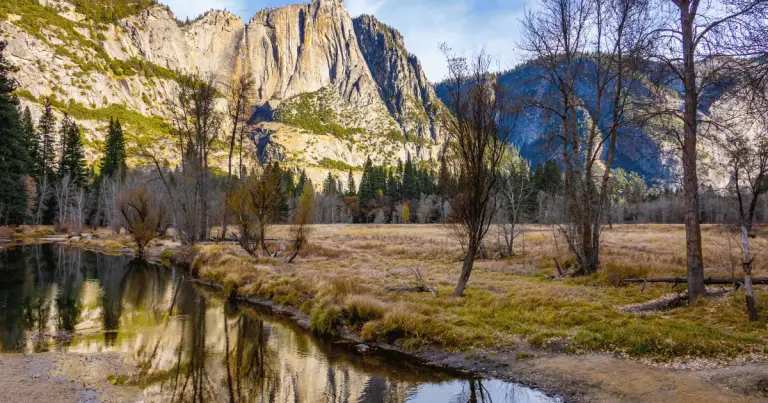Thirsting for Answers: Drinking Lake Tahoe’s Crystal Waters
Lake Tahoe is a stunning and picturesque destination that attracts millions of tourists every year. Its crystal-clear blue waters and panoramic views have made it a popular choice for swimming, boating, and other water-based activities.

But, can you drink Lake Tahoe water? This is a question that often pops up amongst visitors to the region.
Location of Lake Tahoe
Lake Tahoe is located in the Sierra Nevada mountain range, straddling the California and Nevada borders. It is the largest alpine lake in North America, and the second deepest too, with a depth of around 1,645 feet (0.5 km). The lake’s ecosystem is unique and boasts a diverse collection of flora and fauna, some of which are endemic to the region. The clarity of the water in Lake Tahoe is also impressive, with visibility reaching up to 70 feet (21.34 m) deep, that makes people wonder if it’s possible to drink Lake Tahoe’s water.
Can you drink Lake Tahoe water?
The response is affirmative, yet it delves into a realm of complexity. The Environmental Protection Agency (EPA) does not classify Lake Tahoe as a drinking water source, meaning that it is not treated or disinfected for consumption. Another factor to take into account is the presence of algae blooms in the lake, which can release toxins that are harmful to human health. It is important to note that some water agencies do treat water from the lake and distribute it as drinking water, but it goes through a rigorous filtration and disinfection process.
What are the benefits and disadvantages of drinking Lake Tahoe’s water?
There are benefits to drinking Lake Tahoe water. The water from the lake is rich in minerals and nutrients, particularly calcium and magnesium, which can have a positive impact on health, including reducing the risk of osteoporosis and cardiovascular disease. However, drinking water directly from the lake can also have disadvantages, including the risk of ingesting harmful bacteria and parasites that can cause gastrointestinal illness.

Fascinating details
Some interesting facts about Lake Tahoe’s water include that it is so clear that you can see down to depths of up to 70 feet (21.34 m). It takes around 650 years for the water in Tahoe to circulate the entire lake. Moreover, some of the water in the lake dates back to over 2 million years ago, making it one of the oldest lakes in North America.
What to expect when visiting Lake Tahoe?
If you are visiting Lake Tahoe, there are a few things you should expect when it comes to the water. Firstly, the lake can be cold, with temperatures ranging from 40 °F (4.44 °C) to 70 °F (21.11 °C), so be prepared for a shock if you’re planning to go for a swim. Secondly, it is recommended that you do not drink the water from the lake directly. However, there are plenty of bottled water suppliers or restaurants and cafés that serve treated water from the lake.
Frequent questions
What is the best time of the year to visit Lake Tahoe?
The best time to visit Lake Tahoe depends largely on the type of activities you’re interested in. If you’re an enthusiast of winter sports like skiing or snowboarding, the ideal time to visit would be in the winter months, particularly from late November to early April, when the region is blanketed in snow. On the other hand, if you’re interested in water sports, hiking, or camping, the summer months, specifically from June to September, provide the ideal conditions. The weather is warm, and the lake is at its most vibrant blue. The fall, typically from September to November, offers a serene and less crowded environment, making it a great season for those looking to relax and rejuvenate amidst nature.
Can I boil the water from the lake and drink it?
While boiling water from the lake can kill many types of harmful bacteria and parasites, it does not remove chemical toxins that might be present due to algae blooms or other forms of pollution. Therefore, it’s not recommended to rely solely on boiling for purification purposes. It’s far safer to consume treated water from verified sources when you visit Lake Tahoe.
Are there any beaches where I can safely drink the water?
As a rule, it is not recommended to drink water directly from any beach in Lake Tahoe, regardless of how clear or clean it may seem. This is due to potential contaminants such as algae blooms, runoff pollution, or naturally occurring bacteria. Drinking untreated water can lead to health issues like gastrointestinal disorders. Local water agencies treat water from the lake to make it safe for consumption. Hence, it is always advisable to bring drinking water with you, or purchase it from a reliable source when visiting the beaches at Lake Tahoe.

Conclusion:
In conclusion, it is safe to say that the question of whether you can drink Lake Tahoe water is not a straightforward one. While the lake boasts some impressive qualities, including its clarity and rich nutrient content, it is not treated for drinking and can contain harmful algae toxins. If you’re visiting Lake Tahoe, it’s probably best to stick to bottled or treated water to stay safe and healthy. Remember, it’s essential to respect and preserve the ecosystem of Lake Tahoe by making sustainable choices and avoiding pollution.







